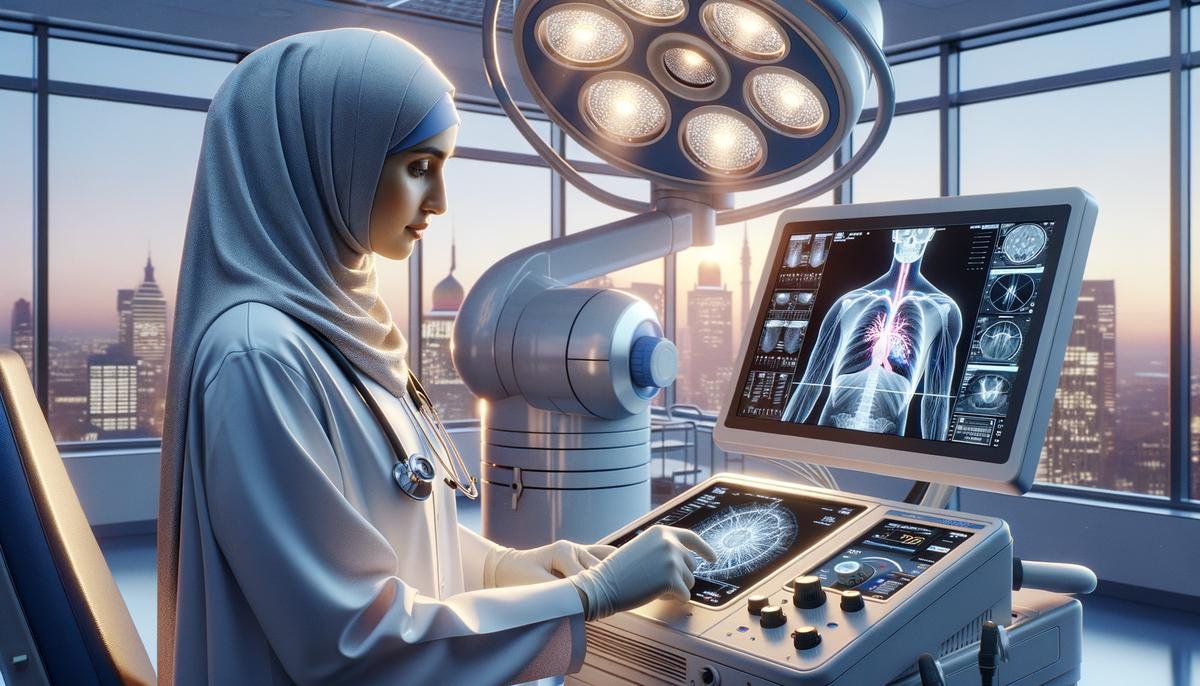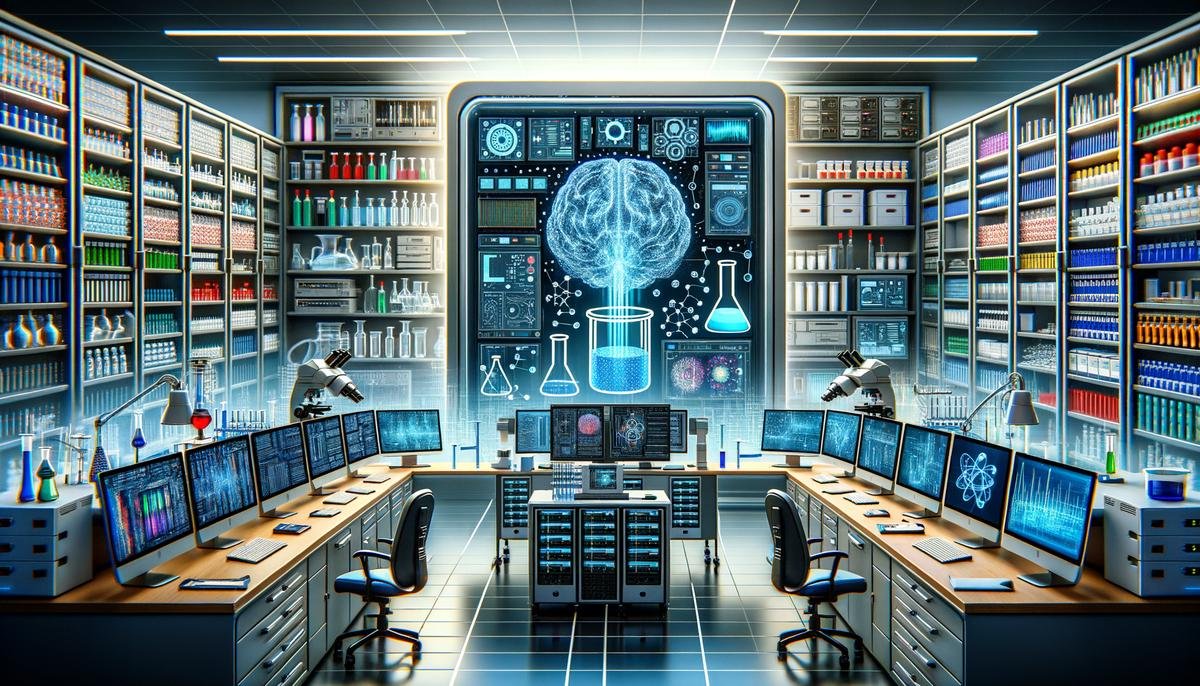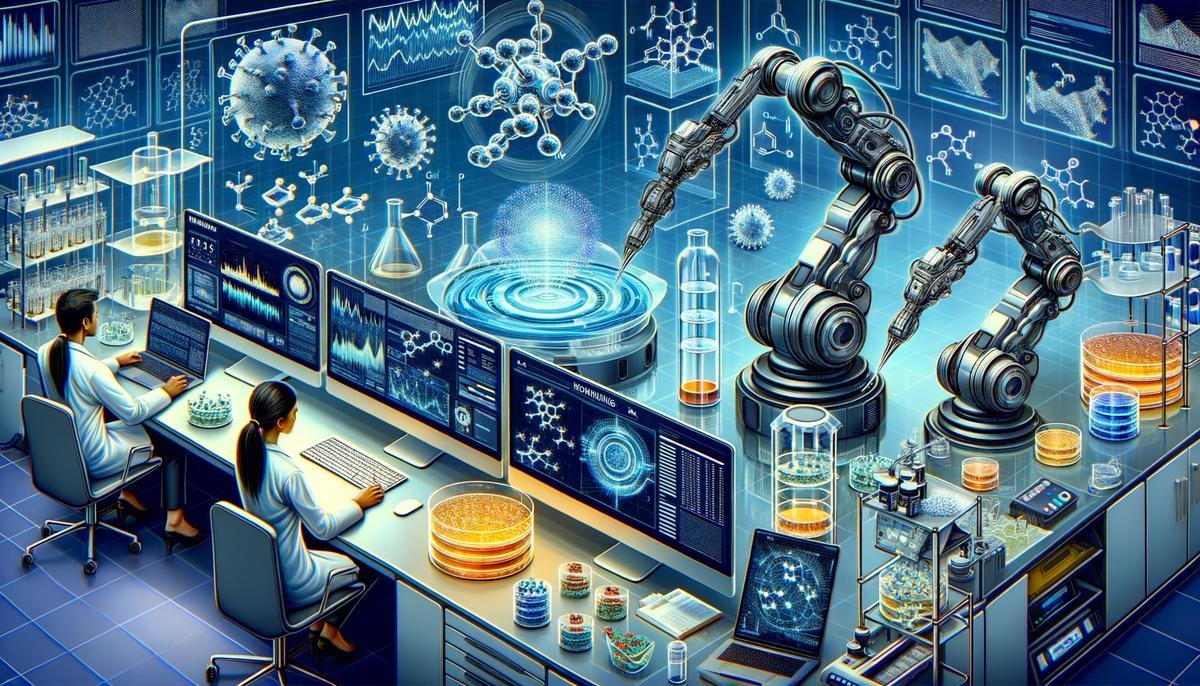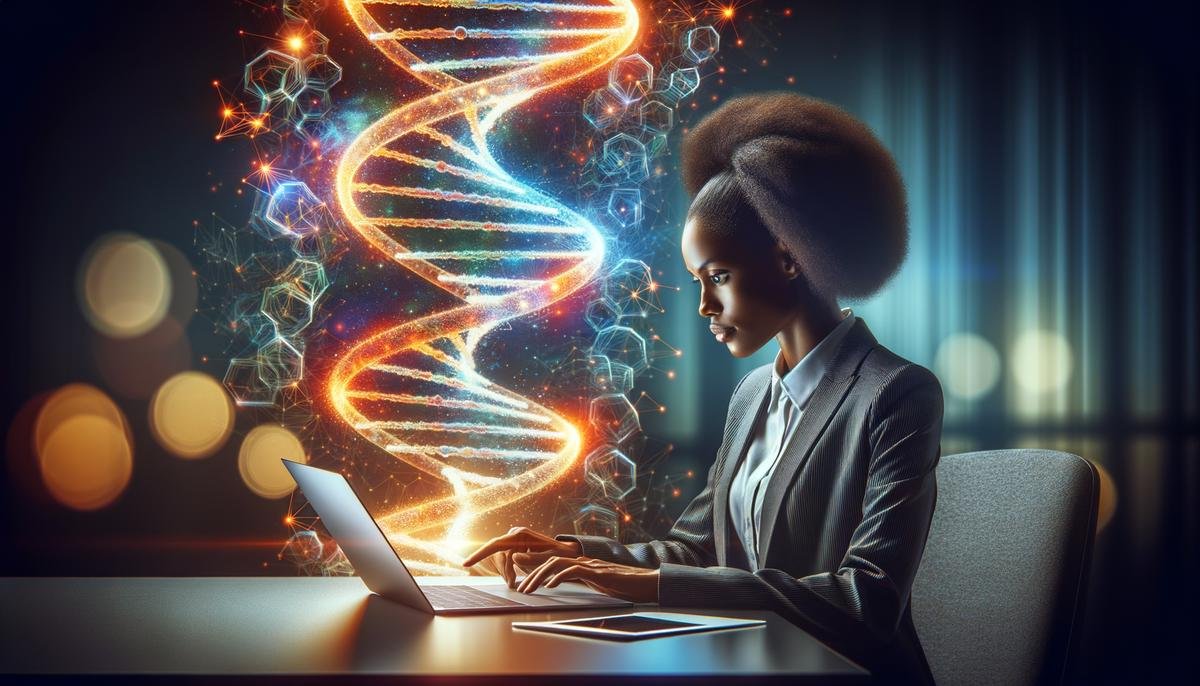Machine learning is making a significant impact in the medical field, especially in the discovery of new drugs. This technology is not only a trend but a powerful tool that is changing the way we find medications, making it faster, more precise, and cost-effective. Explore how this innovative approach is shaping the future of medicine and the challenges and opportunities it presents in the pharmaceutical industry.
Understanding Machine Learning in Drug Discovery
Unlocking the Future of Medicine: How Machine Learning Is Revolutionizing Drug Discovery
In the fast-paced world of medical advancements, there’s a game-changer that’s quietly making waves – yes, we’re talking about machine learning. This cutting-edge technology is not just another buzzword; it’s transforming how we discover new drugs, making the process quicker, more efficient, and significantly less expensive. So, let’s dive into the nitty-gritty of why machine learning has become an indispensable ally in modern drug discovery.
What is Machine Learning Anyway?
Imagine teaching your computer to think and learn from experience. That’s machine learning in a nutshell. It’s a branch of artificial intelligence (AI) that uses data and algorithms to simulate how humans learn, gradually improving its accuracy. In the realm of drug discovery, this means analyzing vast amounts of data to predict which compounds could become the next big breakthrough in medicine.
Speeding Up the Discovery Process
Traditionally, finding a new drug was like searching for a needle in a haystack. Scientists had to manually test thousands of compounds to see if any of them had the potential to treat diseases – a process that was not only time-consuming but also incredibly costly. Enter machine learning. With its ability to quickly sift through and analyze vast datasets, machine learning can identify promising compounds in a fraction of the time it takes through traditional methods.
Improving Accuracy and Efficiency
Accuracy is paramount in drug discovery. The last thing anyone wants is to invest in a compound that looks promising initially but fails later on. Machine learning improves accuracy by predicting how different compounds will react in the body. This allows researchers to focus only on the most promising candidates, reducing waste and improving the overall efficiency of the drug discovery process.
Cost Reduction: A Major Win
Developing a new drug can cost billions of dollars – a hefty price that often trickles down to patients. Machine learning helps cut down these costs significantly. By narrowing down the list of potential candidates early in the discovery process, it reduces the amount of money spent on failed experiments and lengthy trials. This could potentially lower drug prices, making life-saving medications more accessible to those who need them.
Facilitating Personalized Medicine
One of the most exciting prospects of machine learning in drug discovery is its potential to pave the way for personalized medicine. By analyzing genetic information, machine learning can help predict how different individuals will respond to certain medications, leading to more personalized treatment plans. This means more effective treatments with fewer side effects, a win-win for both patients and doctors.
In conclusion, machine learning is fast becoming an indispensable tool in modern drug discovery. Its ability to analyze vast amounts of data quickly and accurately is revolutionizing how new medications are found, promising a future where treatments are more effective, more affordable, and more personalized. Indeed, the intersection of machine learning and medical science is where the future of healthcare begins.

Case Studies: Success Stories in ML-Driven Drug Discovery
Machine learning has not just left its mark on the field of drug discovery within the pharmaceutical industry. Its influence stretches far and wide, impacting areas like patient diagnosis, treatment outcomes prediction, and even the development of precision medicine. Let’s dive into these areas to understand the breadth of change machine learning has brought about.
First off, diagnosing patients has taken a leap into the future with machine learning. Traditionally, diagnosing diseases, especially those with complex symptoms, can be time-consuming and prone to errors. Machine learning algorithms, by contrast, can analyze vast datasets of patient information to identify patterns that might elude human observers. For instance, by feeding machine learning systems with data from thousands of medical records, including symptoms, test results, and outcomes, these algorithms can help predict the likelihood of a disease in a patient much quicker and with higher accuracy. This not only speeds up the diagnostic process but also ensures that patients receive the right treatment sooner.
Moving on, machine learning has also made waves in predicting treatment outcomes. This is particularly revolutionary because it allows healthcare professionals to tailor treatments to individual patients. By analyzing data from previous treatment cases, including patient responses and drug efficacies, machine learning models can predict how likely a patient is to react positively to a certain treatment. This predictive power is crucial in diseases like cancer, where choosing the most effective treatment quickly can significantly impact survival rates.
Moreover, the journey towards fully personalized medicine is being paved by machine learning. Personalized medicine, the idea of tailoring medical treatment to the individual characteristics of each patient, has been a long-held goal in healthcare. Machine learning is accelerating this shift by enabling the analysis of genetic information alongside environmental and lifestyle factors to predict disease risk and treatment outcomes for individuals. This means that in the near future, treatments could be customized not just to the disease but to the patient’s unique genetic makeup, potentially increasing the effectiveness of treatments while reducing side effects.
Lastly, machine learning’s impact extends to the management of clinical trials. The traditional model of clinical trials is fraught with inefficiencies, from patient recruitment to trial design and data analysis. Machine learning algorithms can optimize these processes by identifying the most suitable candidates for trials, predicting trial outcomes, and even monitoring patient compliance and reactions in real-time. This not only makes clinical trials more efficient and less costly but also improves the safety and effectiveness of medical interventions being tested.
In summary, machine learning’s role in the pharmaceutical industry transcends drug discovery. Its applications in patient diagnosis, treatment outcomes prediction, personalized medicine, and clinical trial management underscore its potential to overhaul traditional practices. As technology continues to evolve, the promise of more accurate, efficient, and personalized healthcare, powered by machine learning, seems not just plausible but inevitable. This represents a significant stride forward in our quest to conquer diseases and improve quality of life, showcasing the boundless potential of integrating machine learning into the fabric of healthcare and pharmaceutical sciences.

Challenges and Limitations of ML in Drug Discovery
While machine learning sounds like a magic wand for the pharmaceutical world, making drug discovery faster, more precise, and cost-effective, it’s not without its hurdles. Navigating these challenges is crucial for fully harnessing machine learning’s potential in revolutionizing drug discovery.
One major hurdle is the quality and availability of data. Machine learning algorithms learn from vast amounts of data, but what if the data is flawed or biased? Incorrect or incomplete data can lead to inaccurate predictions, potentially derailing drug development processes. Ensuring high-quality, comprehensive datasets is essential, yet acquiring such datasets can be difficult due to issues like patient privacy concerns and data sharing restrictions among research institutions.
Another obstacle is the complexity of biological systems. Human biology is incredibly complex, and modeling this complexity in a way that a machine learning algorithm can understand and analyze is no small feat. Effective machine learning in drug discovery requires not just data scientists, but also interdisciplinary collaboration with biologists, chemists, and pharmacologists to accurately model biological processes and disease pathways.
Also, there’s the challenge of interpretability, or the “black box” problem. Machine learning models, especially deep learning models, can be incredibly complex, making it difficult to understand how they arrive at their predictions. This lack of transparency can be a significant issue when seeking regulatory approval for new drugs. Regulators and stakeholders want to understand how decisions are made, necessitating advancements in making machine learning algorithms more interpretable.
Integration into existing systems poses yet another hurdle. The pharmaceutical industry is traditionally conservative and risk-averse, partly due to the high stakes involved in drug development. Integrating machine learning models into existing R&D pipelines can be challenging, requiring not just technological changes but also cultural shifts within organizations to embrace new ways of working.
Finally, ethical considerations cannot be overlooked. As machine learning becomes more involved in drug discovery, issues such as patient privacy, data ownership, and informed consent come to the forefront. Ensuring ethical use of data and algorithms is paramount to maintain public trust and comply with legal standards.
Despite these hurdles, the promise of machine learning in drug discovery is too significant to ignore. With continued research, cross-disciplinary collaboration, and thoughtful addressing of these challenges, machine learning can indeed fulfill its potential to transform the way drugs are discovered, making the process quicker, more accurate, and more cost-effective. As we move forward, it’s clear that machine learning will play a pivotal role in shaping the future of medicine, opening up new frontiers in our quest to combat disease.

The Future of Machine Learning in Pharmaceutical Research
The Future of Machine Learning in Drug Development: Overcoming Challenges and Embracing Opportunities
The world of drug development is standing on the brink of a significant transformation, thanks to machine learning (ML). While the initial sections of our exploration have illuminated the vast potential ML holds in revolutionizing drug discovery – from accelerating the pace of discovery and enhancing accuracy to paving the way for personalized medicine – it’s also crucial to navigate the road ahead with an understanding of the hurdles and opportunities that lie in wait.
Navigating Data Challenges in ML-Driven Drug DevelopmentA crucial linchpin in harnessing the power of ML for drug development is the quality and availability of data. ML algorithms thrive on vast datasets to learn and make predictions. However, the sensitive nature of medical data, coupled with strict privacy regulations, sometimes limits the amount of data that can be freely accessed and utilized. Ensuring data privacy while still making rich datasets available for ML applications is a challenge that needs a balanced approach. Innovations in data anonymization and synthetic data generation present promising avenues to tackle this issue, ensuring that ML models can learn from comprehensive datasets without compromising patient privacy.
Understanding the Complex Tapestry of Biological SystemsThe complexity of biological systems adds another layer of challenge. The human body is an intricate network of systems and processes, making the prediction of drug interactions and effects a daunting task. ML models need to be trained on incredibly diverse datasets that encompass a wide range of biological variables to accurately predict drug development outcomes. Advancements in multi-omics – the integration of genomics, proteomics, and metabolomics data – offer a holistic view of biological systems that can enhance the training of ML models, leading to more accurate predictions and efficient drug development processes.
Improving the Interpretability of ML ModelsInterpretability remains a thorny issue in the application of ML in drug development. Stakeholders, including scientists, regulators, and clinicians, often require clear insights into how ML models arrive at their conclusions. The “black box” nature of some ML algorithms can hinder their adoption, as trust is paramount in healthcare applications. Efforts are underway to develop more interpretable ML models and to create tools that can explain model predictions in understandable terms. This transparency is key to gaining the confidence of all parties involved in the drug development process.
Seamless Integration into Existing WorkflowsAnother challenge is the integration of ML technologies into existing drug development systems and workflows. Many pharmaceutical companies operate on legacy systems that are not readily compatible with the latest ML solutions. Bridging this gap requires careful planning and investment in infrastructure that can support ML applications. Additionally, the workforce needs to be trained to work alongside these intelligent systems, which involves a shift in the skill set that has traditionally been valued in the pharmaceutical industry.
Ethical Considerations and the Way ForwardEthically, the use of ML in drug development walks a tightrope. Issues such as bias in ML algorithms and the equitable use of ML-driven treatments need to be addressed to ensure that the benefits of these technologies are accessible to all. Ongoing dialogue among industry stakeholders, ethicists, and regulators is essential to establish guidelines that promote ethical practices in the use of ML for drug development.
Despite these challenges, the future of ML in drug development is bright with possibilities. From streamlining the drug discovery process and enabling the creation of more effective and personalized treatments to reducing costs and expediting the bringing of new drugs to the market, the potential is immense. As we continue to refine ML technologies and tackle the hurdles head-on, we’re moving towards a future where drug development is more efficient, precise, and patient-focused than ever before. Embracing this wave of innovation, with an eye on overcoming challenges and leveraging opportunities, will be key to unlocking the full potential of ML in transforming the realm of drug development.
As machine learning continues to evolve and shape drug development, it’s clear that its potential to revolutionize the pharmaceutical industry is vast. From making drug discovery more efficient to introducing personalized treatments and ensuring more people can access life-saving medications, the benefits are profound. Facing and overcoming the challenges ahead will require collaboration and innovation, but the promise for a future where healthcare is more precise, effective, and tailored to individual needs is well within our grasp. Embracing machine learning in drug development is not just about embracing new technology—it’s about paving the way for a healthier future for everyone.




